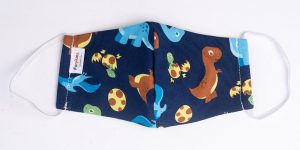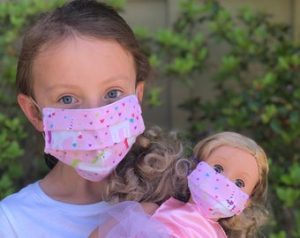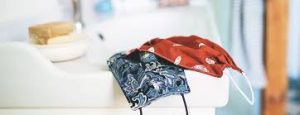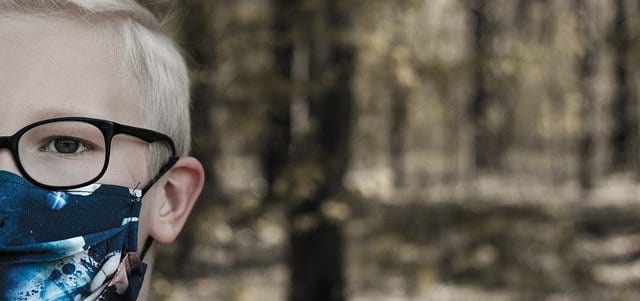6 key things to know right now about mask safety.
Here are six helpful tips for keeping your child safely masked at school and in public.
Compliance.
Without a doubt, the best way for your child to be comfortable and compliant with masking is for you to model proper behavior yourself. Make masks a part of your and your child’s verbal checklists before leaving the house. Keep masks for the entire family in a visible spot, by the front door, to avoid mistakes on busy mornings. Remind them that we’re doing this as much for others as for ourselves.

Be Creative.
Another means of ensuring compliance and getting buy-in is by allowing your child multiple mask choices and keeping them festive. Make masks of varying styles and fabrics together, if possible, or purchase a variety for them to match their wardrobe (and if small, also for their dolls or animals). Allow your kid to have different masks for different days, or ones to match their school uniform.

Start Safe.
When purchasing or making cloth masks, remember that multi-layers are the way to go! Stanford experts recommend three layers: the innermost should be soft cotton to absorb moisture, the middle a spun-bond (polyester) material, and outermost a cotton-poly fabric to repel moisture. Although any type of mask is better than no mask, researchers at Florida Atlantic University have found that these three-layer, home-made masks are much more effective at containing air particles when compared with bandannas, etc.

Stay Clean.
Wash hands after touching or removing used masks. Per CDC guidelines, washcloth masks after each use to minimize bacteria build-up. Machine wash in warm water with other clothes. Or hand wash for five minutes in a bleach-water solution (4 teaspoons household bleach:1 quart room temperature water). Then rinse well with cool water. Dry masks completely in sunlight or in the dryer on “high.”
Stay Safe.
Keep your cloth mask in a Ziploc bag when not in use to contain germs. This also prevents your mask from coming into contact with potentially unsanitary surfaces. Too, this is a good way to keep unused masks in your purse or car, so you are always prepared. Keep the 2nd bag on hand for dirty disposable masks so you do not cross-contaminate your purse. And pack an extra bagged mask in your child’s backpack for those “oops” lost, dropped, or forgotten times.

Expert Opinion: Dispelling Rumors.
According to Dr. Chu of the Stanford Anesthesia Informatics and Media Lab, it’s incorrect that wearing a cloth mask for long periods can trap excess amounts of carbon dioxide, leading to brain damage.
“A properly constructed mask provides more than enough ventilation. In fact, one way to test if your mask is well made is to try to blow out a candle through the mask from about 1-foot away. If you can’t do so, your mask might be too tightly woven. Other people feel that wearing a mask encourages people to touch their faces and to loosen their adherence to other safety precautions like social distancing and hand washing. We’ve found the opposite. Wearing a mask reminds people to continue to be cautious. With a mask on, you actually touch your face less.”
Stay safe out there and mask up!
—
Trevor Wisdom is the managing editor of Nola Family, mother of a fabulous teacher, and has been a contributor to multiple lifestyles magazines.


